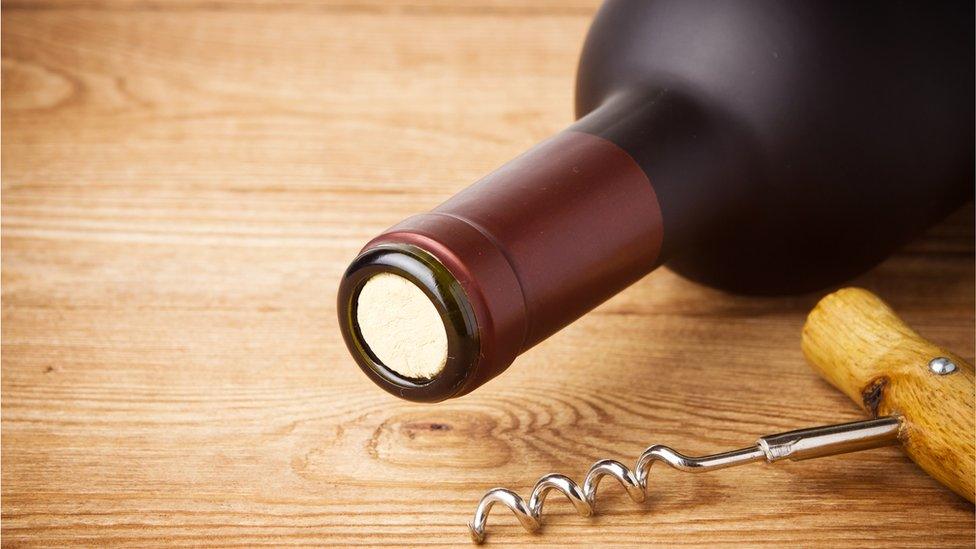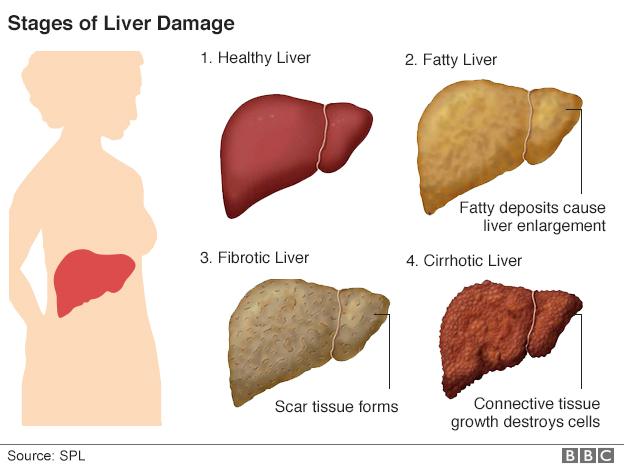Send heavy drinkers for liver scan, GPs told
- Published
- comments

Women who regularly drink more than three-and-a-half bottles of wine a week should get their livers checked, says new draft advice, external for England.
For men, the threshold is five bottles of wine a week or 50 units of alcohol, says the National Institute for Health and Care Excellence.
The organisation says GPs should refer "harmful" drinkers for liver scans.
Cirrhosis can be silent until the damage becomes so extensive it stops the liver working.
Women 'nearing equality with men - in alcohol consumption'
It usually takes years for the condition to reach this stage of organ failure.
Anyone who has been drinking harmful amounts for months should get scanned, say the draft recommendations.

Early treatment and support can prevent serious damage.
According to Public Health England, nearly 2 million people in England are drinking harmful amounts of alcohol - more than 50 units a week for men and 35 units a week for women.
The NHS recommends adults should not regularly drink more than 14 units of alcohol a week.
If you drink as much as 14 units a week, it is best to spread this evenly over three or more days.
A unit of alcohol is about half a pint of normal-strength lager or a single measure of spirits. A small (125ml) glass of 11% strength wine is about 1.4 units, while the same size glass of 14% strength wine is 1.8 units.
Prof Gillian Leng, deputy chief executive of NICE, said: "Many people with liver disease do not show symptoms until it is too late.
"If it is tackled at an early stage, simple lifestyle changes or treatments can be enough for the liver to recover. Early diagnosis is vital, as is action to both prevent and halt the damage that drinking too much alcohol can do."
Dr Andrew Fowell, liver expert at the Portsmouth Hospitals NHS Trust, said: "Identifying people who are at risk of liver disease and offering them non-invasive testing to diagnose cirrhosis is key to ensuring they are given the treatment and support they need early enough to prevent serious complications.
"Ten years ago diagnosis of cirrhosis would often require a liver biopsy, but now with advances in non-invasive testing it is much easier for patients and health professionals to make a diagnosis."
The draft quality standard from NICE recommends a non-invasive scan called transient elastography which uses ultrasound and low-frequency elastic waves to check the liver. A consultation on the draft document is open until February 2017.
- Published26 September 2016

- Published25 October 2016
